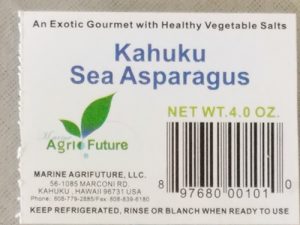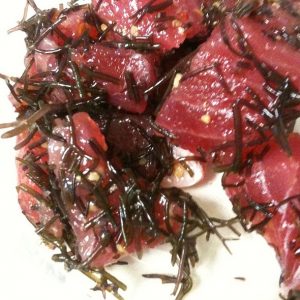Following initial reports that at least 14 people were sickened with Salmonella linked to farmed seaweed from Hawaii, Marine Agrifuture, LLC. of Kahuku, HI, is recalling its Kahuku Ogo, Robusta Ogo and Kahuku Sea Asparagus which were distributed mainly in Hawaii to seafood and produce distributors through direct delivery, but also to some customers in CA, WA, NV, and Tokyo Japan, and retailed at local farmers markets in Hawaii.
 The Ogo products come in a plastic bag of various weights from 0.5 LB to 35 LB, which were sold from November 2, 2016 and prior, and the Sea Asparagus in 4 Ounce, 1 LB clear plastic clamshell or in a 5 LB of plastic bag marked with a tracking number stamped on the lids or bags, which were sold from November 8, 2016 and prior. The corresponding UPC number for 4 OZ, 1 LB, and 5 LB of sea asparagus are 897680001010, 897680001027, and 897680001041 respectively.
The Ogo products come in a plastic bag of various weights from 0.5 LB to 35 LB, which were sold from November 2, 2016 and prior, and the Sea Asparagus in 4 Ounce, 1 LB clear plastic clamshell or in a 5 LB of plastic bag marked with a tracking number stamped on the lids or bags, which were sold from November 8, 2016 and prior. The corresponding UPC number for 4 OZ, 1 LB, and 5 LB of sea asparagus are 897680001010, 897680001027, and 897680001041 respectively.
The potential for contamination was noted after special tests by the Hawaii Department of Health revealed the presence of Salmonella in saltwater in the farm production and processing areas.
Production of the product has been suspended while FDA and the company continue their investigation as to what caused the problem.



.jpg) daughter would pay her respects at Ms Carter’s funeral.
daughter would pay her respects at Ms Carter’s funeral.